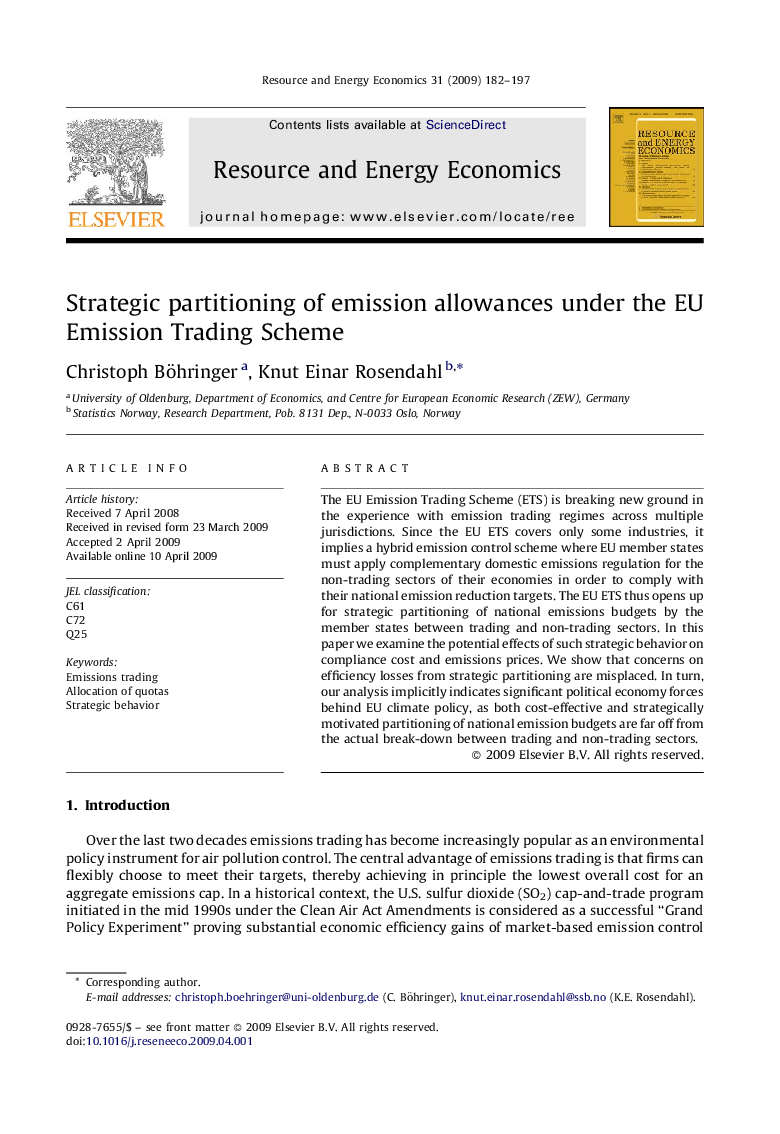| Article ID | Journal | Published Year | Pages | File Type |
|---|---|---|---|---|
| 985857 | Resource and Energy Economics | 2009 | 16 Pages |
The EU Emission Trading Scheme (ETS) is breaking new ground in the experience with emission trading regimes across multiple jurisdictions. Since the EU ETS covers only some industries, it implies a hybrid emission control scheme where EU member states must apply complementary domestic emissions regulation for the non-trading sectors of their economies in order to comply with their national emission reduction targets. The EU ETS thus opens up for strategic partitioning of national emissions budgets by the member states between trading and non-trading sectors. In this paper we examine the potential effects of such strategic behavior on compliance cost and emissions prices. We show that concerns on efficiency losses from strategic partitioning are misplaced. In turn, our analysis implicitly indicates significant political economy forces behind EU climate policy, as both cost-effective and strategically motivated partitioning of national emission budgets are far off from the actual break-down between trading and non-trading sectors.
